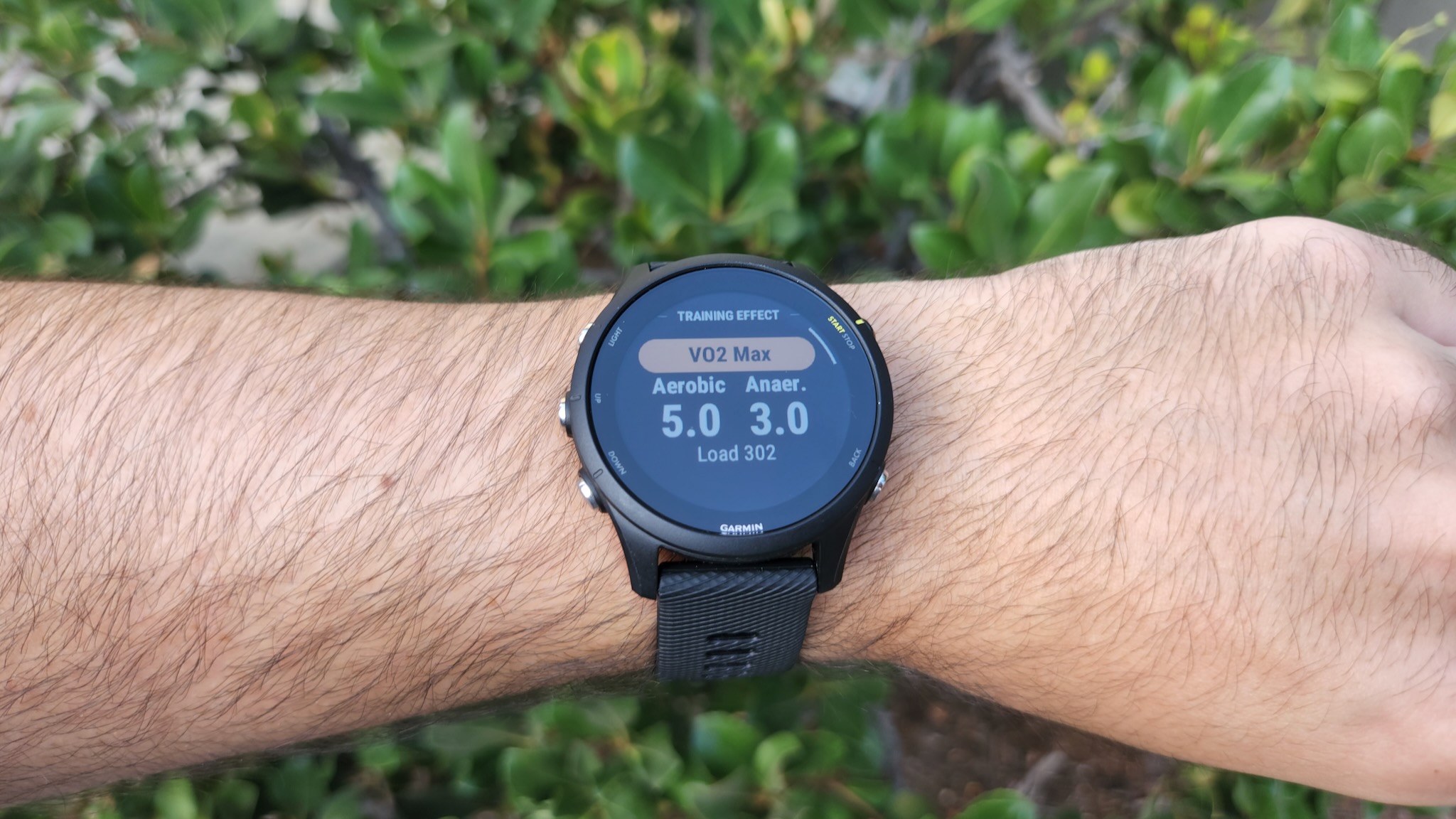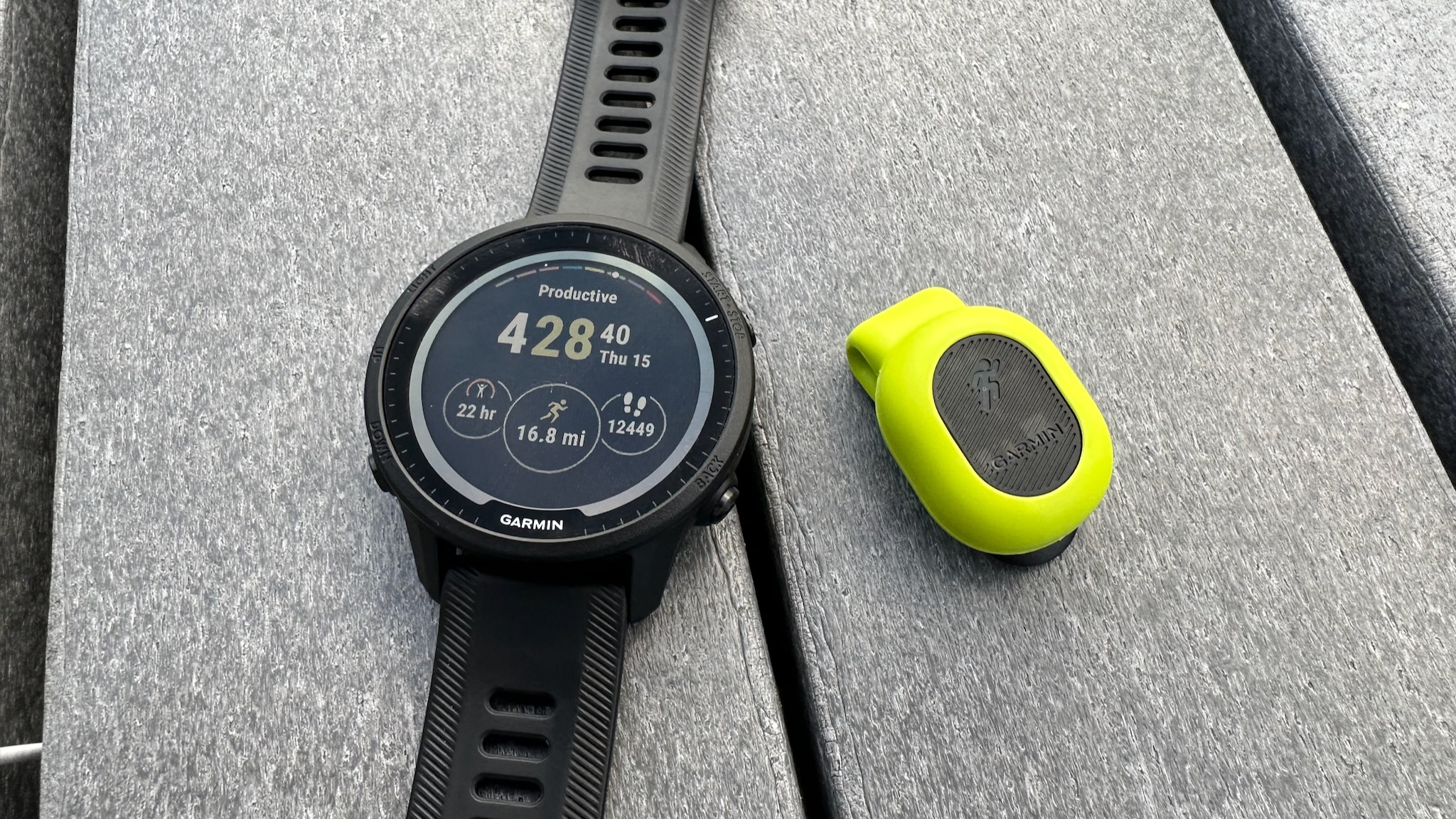The Garmin Forerunner 265 and 965 leaks will excite and frustrate fans
Recent Forerunner 255 or 955 buyers will look askance at Garmin for updating the design less than a year later.

Several recent leaks have suggested that Garmin will launch new Forerunner 265 and 965 watches in the next month or two. Allegedly, they'll add a Venu-style AMOLED display on top of the Forerunner hardware, while potentially adding some new features that the latest Forerunner 955 and 255 missed out on.
Garmin has always sold an obscene number of watches, best shown by its Forerunner series with its inexplicable numbering scheme. But with a few exceptions, Garmin tends to let its running watches have a couple of years to make their mark before launching a newer generation.
This year, Garmin appears to be focusing on catching up with more mainstream watches for its health tracking, adding ECG support and — according to a Garmin Connect app update spotted by Gadgets & Wearables — skin temperature readings. But it may also ape these mainstream brands by starting to release devices at a more frequent cadence. Maybe even annually!
If the leaks are true, the Garmin Forerunner 265 and 965 will combine the best that the Forerunner and Venu lineups have to offer, a tempting package for anyone who skipped the brand's 2022 watches. But for recent Garmin watch buyers, this news will have to feel especially frustrating.
What we know about the new Garmin Forerunner 265 and 965

Back in September 2022, The5Krunner received leaked pictures of the Garmin Forerunner 265S, which matches the naming scheme of the Forerunner 255 and 255S. It matched the 255 series in its overall look, with the same quick-release bands, four-pin charging ports, and Garmin Elevate v4 heart rate monitor. The differentiator, of course, is the AMOLED display.
Just as the 255 replaced the Forerunner 245 at a similar price point, the 46mm Forerunner 265 is already meant to succeed the 2022 watch, with the 42mm 265S as the smaller model at the same price point. Both watches will allegedly cost $449 / €449 or $499 / €499 for the version with music storage — $100 more than the 255 Music.
RunningDirect is the third online retailer to list the incoming Forerunner 265 and Forerunner 965 and the first to confirm projected prices of €499.99 and €649.99.#garmin #forerunner #running #sports #wearables pic.twitter.com/kDvGbhEOqVJanuary 26, 2023
Retailer 5 Under Golf prematurely published, then deleted a listing for the Garmin Forerunner 265 (that link is cached on the Internet Archive, found via Advnture). The listing shows some intriguing color options (Aqua and Light Pink) along with the usual Black and Whitestone options.
Get the latest news from Android Central, your trusted companion in the world of Android
According to this retailer listing, which must take its information from Garmin directly, the Forerunner 265 and 265S will hit 13 and 15 days of battery in smartwatch mode or 20 to 24 hours in GPS mode, respectively.
Compared to the Forerunner 255, this new model will last just a day less in smartwatch mode but allegedly loses 10 hours in GPS-only mode, no doubt thanks to the AMOLED display. Intriguingly, the smaller 265S appears to be the better battery option, gaining 4 GPS hours while the 255S lost 4 hours. It's possible these battery figures were swapped by mistake, however.
That listing also gave us a surprising look at the watch's new features. Along with returning perks like multi-band GPS and Garmin Coach, the watch will add Training Readiness, an upgraded version of Body Battery that was only available on the Garmin Forerunner 955. Rather than focus on your overall fatigue, Training Readiness keys in on your recovery time, Acute Load, and other data to determine when you're ready to run and how hard you should push yourself.
One brand-new feature is Wrist-Based Running Dynamics, which gives you information on stride length, cadence, and other data that you typically need a $70 Garmin Running Dynamics Pod to see. Plenty of competing running watches rely on wrist-only data, but this is generally considered less accurate. So it's intriguing to see Garmin go this route, even if the deleted listing says you should buy the Pod for "even more accurate data."

As for the Garmin Forerunner 965, it will also see a $100 price increase over the Forerunner 955 — according to this cached 5 Under Golf listing. Like the 955, the 965 will only come in one 1.4-inch size, though it'll have three color options: Black, Whitestone, and Amp Yellow.
The only new feature on that retailer listing is the wrist-based running dynamics, which serious runners will no doubt appreciate but will have to test to see how accurate it is. Otherwise, you're paying extra for the AMOLED display and titanium bezel, which will likely support ECG readings like the Garmin Venu 2 Plus.
Intriguingly, the Garmin Forerunner 965 will both cost the same as the 955 Solar and last longer in smartwatch mode, with an estimated 23 days to the 955 Solar's 20 days. This advantage falls short when you use GPS tracking, as it only lasts 31 GPS hours to the 955 Solar's 49 hours. Still, it's an impressive statistic considering many of the best fitness watches only last a week or less with active GPS use.
While both watches will benefit from the AMOLED display from a visual standpoint, only the Forerunner 965 will support full-color mapping. So does the Forerunner 955, but its slow-refreshing MIP display makes it a more methodical experience swiping through your mapped surroundings. In theory, the 965's topographical maps will look fantastic so long as the built-in processor is up to the task of scrolling through them seamlessly.
Why current Garmin owners might feel aggrieved
As a journalist who received both the Forerunner 255 and 955 for review at no personal cost, I can hardly complain. But what about all the Garmin users who just bought one of them, only to find out that they could've bought even better versions if they'd waited a bit longer?
If Garmin really does release the Forerunner 265 about 9 months after the 255 launches, with much better training recommendations and running dynamics without a $70 Pod — not to mention the AMOLED display — those buyers are going to look askance at Garmin for selling tech that it knew would be supplanted relatively quickly.
Ideally, Garmin will add these new software tools to the 255 and 955 via software OTA update alongside the newer watches. But Garmin could very well keep them exclusive for a few months to encourage new sales — as it did with the Forerunner 945 LTE, which received most of the 955's once-exclusive applications about five months later.

I consider both the 255 and 955 two of the best running watches by far, but it's undeniable that neither of them is particularly attractive with their dull battery-saving displays and plastic frames.
So the idea of Garmin selling more expensive versions with an AMOLED upgrade (plus an ECG-compatible titanium bezel on the pricier 965) is perfectly fine in theory, so long as the software is equivalent. That means it's the runner's choice if they prefer a more vivid display and attractive design or better battery life and a cheaper price. In fact, I suspect many Garmin users will actively avoid the Forerunner 265, resenting how the AMOLED will burn through battery life.
But for current Forerunner 955 owners swiping through pixellated maps, who now have to either accept their purchase or spend another $600 for an upscaled, fast-refreshing AMOLED experience, they'd be right to be rather peeved! Normally, Garmin watches get two or three years before being replaced, but the rapid-fire launches of the 945 LTE, 955, and 965 three years in a row...seems like a bit much?
It's possible the Garmin Forerunner 265 and 965 leaks will prove incorrect or fake, but the evidence is piling up that we can expect to see them soon. For Garmin Forerunner fans, that'll either be a point of triumph for patient 245 and 945 owners or one of dismay and FOMO for more recent buyers.

Michael is Android Central's resident expert on wearables and fitness. Before joining Android Central, he freelanced for years at Techradar, Wareable, Windows Central, and Digital Trends. Channeling his love of running, he established himself as an expert on fitness watches, testing and reviewing models from Garmin, Fitbit, Samsung, Apple, COROS, Polar, Amazfit, Suunto, and more.
